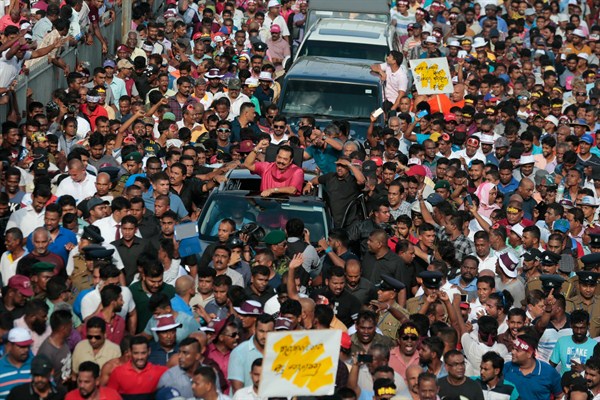Thousands of Sri Lankan demonstrators marched in the capital, Colombo, last month, protesting poor economic conditions and the government’s decision to delay local elections. The protests were led by former President Mahinda Rajapaksa, whose return to political prominence poses a major threat to the ruling United National Front coalition, or UNF. In an interview with WPR, Stanley Samarasinghe, a professor at Tulane University who writes extensively on the poltical economy of Sri Lanka, discusses the widespread discontent with the government and what might be in store for Sri Lanka’s political future.
World Politics Review: What are the main political issues and grievances driving the opposition’s protests, and what has been the ruling coalition’s response?
Samarasinghe: In the current session of the 225-member Sri Lankan Parliament, the main opposition group is known as the Joint Opposition, or JO. Its 54 members are led by former President Rajapaksa with support from another group of 16 lawmakers that broke away from the government in April.

